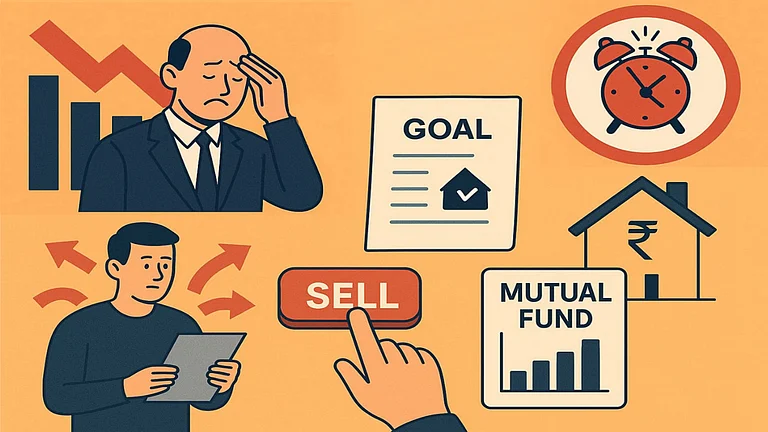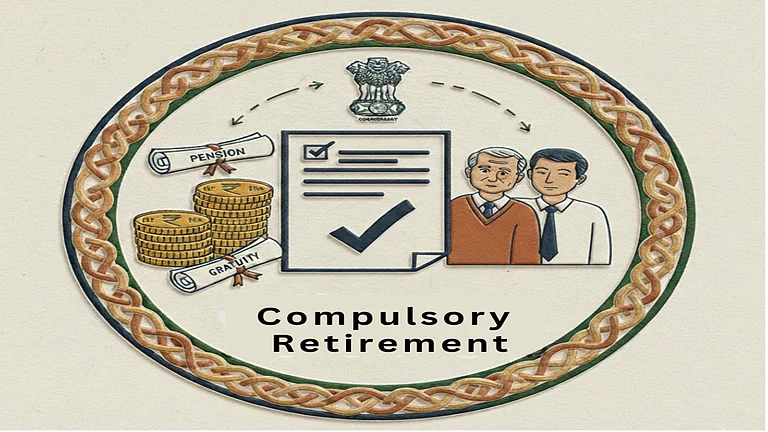
Summary of this article
EPFO's new rules allow partial withdrawal only after completing 12 months of service
Subscribers who leave employment before 12 months can make an immediate 75 per cent partial withdrawal under the "special circumstances" category or unemployment
Full EPF withdrawal is now permitted only after a waiting period of 12 months
The Employees’ Provident Fund Organisation (EPFO) recently announced changes to its withdrawal rules in the Central Board of Trustees (CBT) meeting in October. It made the rules lenient for EPF subscribers. The changes allow partial withdrawals after 12 months of joining the service and full withdrawals after 12 months of leaving service. Due to this 12-month service condition, questions arise as to what happens if an EPF subscriber leaves the job within one year, and how and when the accumulated amount can be withdrawn. Let us understand how these rules would work.
How Much Partial Withdrawal Is Allowed From An EPF Account?
The first doubt an EPF subscriber will have is if partial withdrawal can be allowed immediately if one leaves a job before completing 12 months.
According to the EPFO new rules, one can take out funds partially for three categories of withdrawals, including essential needs (education, wedding, illness), housing needs (home buying, construction, renovation), and other special circumstances (natural calamity, outbreak of epidemic, closure of establishments, continuous unemployment, etc.).
According to the new rules, partial withdrawal is allowed for all categories after 12 months of service. Previously, the eligible withdrawal period varied depending on the reason for withdrawal, which could be up to seven years. Similarly, there were varied withdrawal limits for different reasons of withdrawals. Now, the eligibility period is uniform (12 months) for all reasons, and the withdrawable amount is fixed up to 75 per cent of the accumulated amount (employer contribution + employee contribution + interest) in the EPF account.
It makes two points clear:
A maximum of 75 per cent amount can be withdrawn partially.
Partial withdrawal can be made after 12 months of service period.
However, the same rule may not apply if a subscriber leaves the job within one year.
Says Abhishek Kumar, founder of Sahaj Money, a low-cost fixed-fee advisory platform: “If one leaves a job before completing 12 months, such a subscriber cannot access the 75 per cent partial withdrawal immediately through regular partial withdrawal categories. However, they can withdraw 75 per cent of the balance immediately under the "special circumstances" category without needing to provide specific reasons, as long as they are unemployed.”
So, for anyone, including early job leavers, 75 per cent immediate partial withdrawal is allowed when the reason is covered under special circumstances. For instance, if job loss is due to the closure of an establishment, it will be treated under special circumstances, and up to 75 per cent withdrawal would be allowed.
Simply, if one remains in a job, partial withdrawal is allowed only after 12 months for essential and housing needs. However, for special circumstances or in case of unemployment, immediate partial withdrawal up to 75 per cent is permitted.
Note that these conditions are only for partial withdrawal, not the full withdrawal that includes the remaining 25 per cent of the accumulation.
When Can One Withdraw The Full Amount?
Like partial withdrawal, there are certain conditions for a 100 per cent or full withdrawal.
According to the rules, one can make a full withdrawal in case of retirement after the age of 58, permanent disability, voluntary retirement, retrenchment, incapacity to work, or if a person leaves India permanently.
Unemployment is another reason under which full withdrawal is allowed.
However, Kumar clarifies, “The 25 per cent minimum balance will remain in the subscriber account and cannot be withdrawn until 12 months of unemployment have passed.”
It's crucial to note that under the new rules, premature full withdrawal will be allowed only after 12 months in the case of EPF and after 36 months in the case of the employee pension scheme (EPS). Earlier, a person could withdraw the accumulated amount (both EPF and EPS) after only two months of unemployment.
So, a person who leaves a job within one year and remains unemployed or joins an establishment not covered under the EPFO cannot make a full EPF withdrawal before completing 12 months from leaving the job.
What Happens When There Is No Withdrawal And No Deposit In EPF?
In case a subscriber leaves the money lying in the EPF account, and there is neither a withdrawal nor any credit in the account, the subscriber’s EPF membership wouldn’t be affected. According to the amended EPFO rule that became effective from November 11, 2016, a subscriber’s EPF membership will continue, and the account will continue earning interest until the subscriber attains the age of 58 years. Before this change in rule, the account would become inoperative after no credit for three consecutive years, and interest would stop. However, after the amendment, an EPF account is classified as inoperative only after a subscriber turns 58 years old (55 years of age + three years of no credit in the account). It means interest will be credited to the account of a member up to the age of 58 years.



















